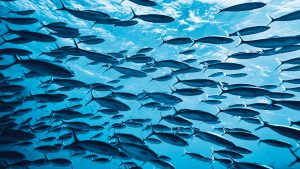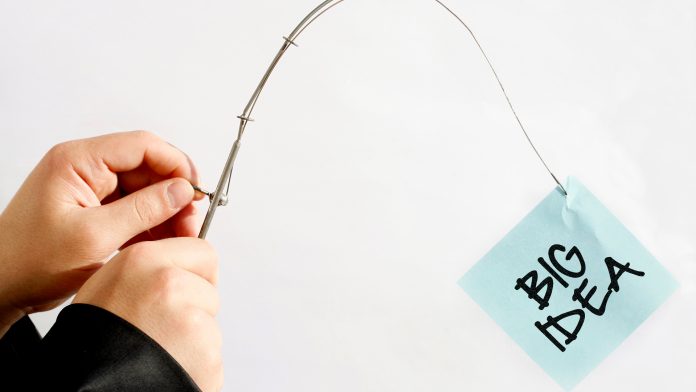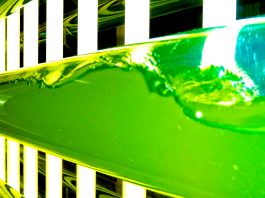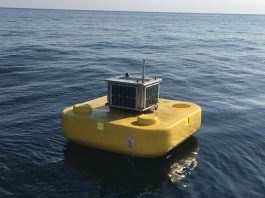By providing a platform for new innovations in aquaculture, the inaugural Global Aquaculture Challenge is helping to transform the food industry’s fastest growing segment.
In recent years, the global appetite for seafood has increased dramatically. Yet, despite demand in this area of the food industry showing no sign of slowing, innovation to support this growth is lacking. Finding sustainable solutions to overcome some of the challenges associated with seafood production – which include complex supply chains as well as insufficient digital tools to inform decision making – is the reason behind a new global initiative established by The Yield Lab. The Global Aquaculture Challenge invites innovators from every area of aquaculture including industry, academia, and public institutions to present and develop their ideas. Successful applicants will be able to glean knowledge from industry experts via relevant mentoring programs and have access to investment opportunities to fully develop their proposals.
Lorna Malkin, Junior Editor of The Innovation Platform, speaks to the COO of The Yield Lab Institute, Brandon Day, and The Yield Lab Asia Pacific Co-founder Larry Taylor about the Challenge.
To begin, can you tell me about The Global Aquaculture Challenge, why it was initiated and the overall process?
The Global Aquaculture Challenge represents a collaboration between The Yield Lab Institute and The Yield Lab Asia Pacific Fund. It was initiated as an open, global call to innovators and startups to create a more interconnected and technology-driven aquaculture industry. Although aquaculture is the fastest growing sector within the food industry, it is also the one most in need of technology innovation, particularly if the industry is to meet the growing global demand for seafood. We believe that sustainably feeding the global population will require an increase in diverse innovation in the areas of agri-food and aqua technologies. The format of the Challenge is intended to bring out innovators from all backgrounds, be it industry, academia, NGOs, producers, or policy makers. Areas of the industry where we are keen to see more innovation include water management solutions, environmental footprint metrics, recirculating aquaculture systems, public policies related to compliance, certification, and traceability as well as animal health and disease management.
The Yield Lab Institute and The Yield Lab Asia Pacific will offer eight innovators the chance to participate in a non-residential and non-dilutive accelerator programme which is intended to last about six months. Successful applicants will be paired with leading experts from the industry and will receive ongoing, relevant subject-matter expert mentoring as well as exposure to potential investors. The initiative is an impact driven, non-equity global accelerator programme which will culminate in a final event where all the innovators will pitch their ideas to a global audience. A panel of judges will select the final winners who will be awarded prizes provided by the Challenge and its sponsors.
Through Challenges like this, we hope to encourage a circular aquaculture approach that works on an economic, ecological, and social level. As an open global call, we invited all ideas, teams, and startups – including research projects – to apply and benefit from the mentorship and entrepreneurial networking structure of our innovation challenge system.
Why is it so important to encourage innovation in aquaculture? What challenges do you hope initiatives like the Global Aquaculture Challenge could help to overcome?
As our global population grows, the demand for fresh and sustainable protein increases commensurate to that. The aquaculture industry will play a key role in meeting that demand only if it can disrupt its historically challenged supply chain. At present, animal protein supply chains pose many issues for retailers who are unable to trace or rely on regulated fish farming practices. The Challenge invites innovators from all aspects of the supply chain, aiming to advance innovations that create a more data-driven, reliable, and sustainable aquaculture value chain to meet the growing protein demand.
According to industry experts, aquaculture will evolve beyond recognition in the coming decade and our focus with the Global Aquaculture Challenge is to support this change by driving innovation forwards. Producers harvesting vast volumes of fish and crustaceans are expected to expand their operations away from open rivers and coastal areas to indoor tanks and offshore cages. New species will emerge as consumer favourites, beyond current popular items such as salmon and shrimp. By means of example, Asia practices little marine aquaculture, and species such as barramundi could become the warmwater equivalent of salmon. According to an EAT-Lancet report collated by scientists and the United Nations’ Food and Agriculture Organization, aquaculture offers one of the most efficient means of supplying the world with protein since fish and shellfish are better at converting feed than land-based animals.
The Yield Lab Institute and The Yield Lab Asia Pacific want to provide a platform for aquaculture innovation that will promote better decision making within aquaculture and support sustainable practices that eliminate waste, improve animal health, and propel economic productivity. Therefore, our selection process favours applicants that include metrics to measure the impact on the environment and production economics.
The Challenge is open to innovators from the industry, academia, and public institutions. How are entries judged?
The applicants are judged on criteria that include the greatest potential, market opportunity, innovation and disruption, feasibility, and scalable application. We are pleased to have the support of an array of significant subject matter experts who act as strategic advisors; a full list can be found on the website www.globalaquachallenge.com. We also have regional sponsors from Latin America, UAE, and Asia Pacific; therefore we incorporate the industry needs and applications in those markets into our selection criteria.
As you can imagine, there are several rounds of reviews required to winnow down the innovators who are invited to participate in the accelerator portion of the programme. It is fair to say that by participating, all are winners. Ultimately the final judging will be done by assessing how each measures up to the criteria for global impact and for regional impact.
Can you tell us about previous winners of similar innovation challenges and how their ideas have been developed/are being used to support the industry today?
Prior to this Challenge, The Yield Lab Asia Pacific ran an aquaculture innovation competition in collaboration with the Singapore Aquaculture Innovation Center in late 2019. We are pleased to report that the five innovations showcased were awarded the support needed to conduct the Proof of Concept that they proposed to the judges. The improvements to the industry ranged from alternative protein sources for feed, to seaweed development.
We are encouraged by reading all the innovative applications for the inaugural Aquaculture Challenge. We are very pleased with the diversity of the applicants with respect to technology, geography, gender, and entrepreneurs and where along the value chain the innovations lie.
When it comes to sustainable aquaculture, what does this involve?
The US soy industry, from the beginnings of its engagement with the aquaculture industry, has emphasised two critical factors. One is profitability, as in the end it is commercial interests that drive industry. But the other, and at least equally important, is the idea of ‘long-term’ or you could say ‘responsible’ or ‘sustainable’ aquaculture. There are many who want to paint aquaculture (or, for that matter, any animal livestock production) as unsustainable. But that is not a given, it is a choice. Aquaculture has been improving its sustainability footprint over time and will only continue to do so if consumers, buyers, and industry desire it. We believe that there is that desire, as people worldwide have awakened to the fact that we have one world and we have not done our best at maintaining it. At least in aquaculture, there is an understanding of this sentiment and efforts have been made to implement continuous improvement approaches. The basis of this effort is to look at the whole aquaculture production/marketing chain and identify where improvements are needed and then put them in place. This starts with the broodstock and ends with the final consumer.
The two key items involved in sustainable aquaculture are, first, understanding what that means and implementing it and, second, mandating that those changes are required in order to be able to sell aquaculture products in any market. There are a lot of questions about seafood certification programmes (some justified), but in the end they are likely the key to driving the innovation to get the commercial industry to make the necessary changes to attain both sustainability and profitability.
What would you say are some of the greatest issues facing the aquaculture industry in terms of sustainability and responsible practices? How can these be improved?
An issue that impacts the suitability and responsible practice in aquaculture is bad actors. Like family farmers in agriculture, most aquaculture farmers likely want to have long-term operations. But if they must compete with those that take the ‘short-term’ approach and do not worry about the future, they will have trouble moving forward. That is why having a more level playing field with fair referees will be critical (and taking into account all levels of production, from subsistence to industrial scale production).
New innovations will also be needed. That is why programmes like the Aquaculture Innovation Challenge are so critical. The Aquaculture Innovation Challenge stimulates emergence of new technologies that help to move the overall aquaculture industry forward, promoting more responsible and sustainable practices. If we think about space travel before the X-Prize, it was dominated by the large companies that had historically run such programmes. Through fostering a challenge approach, we now have a vibrant industry working on space travel. Hopefully, the efforts of individuals, companies, organisations, and competitions like this one will lead us to a more sustainable aquaculture industry.
Can you tell us about some of the work/research The Yield Lab Institute is currently involved in?
The Yield Lab Institute has completed two innovation challenges, namely the Manure Innovation Challenge and most recently the Soy Innovation Challenge. Each challenge, like the Global Aquaculture Challenge, was centred around mentorship and advancing the most promising applicants and innovations in each agtech vertical – manure management and the soy value chain. The Yield Lab Institute also conducts ecosystem mapping to better inform the agtech community about global agtech innovations and ecosystems to drive forward more attention and resources to said regions. That work includes ecosystem assessments of Rosario, Argentina in 2018 and the Piracicaba region of Brazil in the Fall of 2019, and our recent work in East Africa with the FAO (to be published in 2021). We are also working on a key indoor/controlled environment agriculture initiative in St. Louis initiated by a life cycle assessment we conducted with the World Wildlife Fund in 2019.

The Yield Lab Institute is an integral part of The Yield Lab global ecosystem. To implement programmes that are truly global, the regional The Yield Lab organisations collaborate to make the Challenge a global endeavour. In every Challenge, the innovators are given the opportunity to introduce their ideas to the industry and to prospective investors and customers. Each Challenge culminates in a professionally promoted and operated global finale programme to which the global industry is invited. The outcome is that the innovators’ businesses find the resources to grow their technology into the market; in some instances, one of The Yield Lab Funds will invite innovations into an accelerator programme. Because much of global aquaculture is operated by smallholder farmers, it takes specific capability to support innovations to succeed in that business environment. Asia Pacific is home to three quarters of the world’s smallholder farmers and home to more than 85% of global aquaculture; hence it is The Yield Lab Asia Pacific that is driving The Yield Lab Global Aquaculture Challenge.
Looking ahead, what advances in aquaculture technologies do you think we can expect to see over the next ten to 20 years?
Aquaculture, as one of the newest volume livestock industries, is still learning a lot from the terrestrial livestock industry. We are seeing revolutions in agriculture and livestock as technology moves forward. For example, in agriculture we are seeing the value of real time monitoring, satellite data, robotics, and interconnectivity. Learning from both the terrestrial livestock and agriculture industries and adapting lessons from those for aquaculture, as well as adding in new technologies, will have a great impact.
Data gathering and analysis is something that is still not done well in aquaculture, but now with new technologies like automated probes and 5G, we will be able to do this more seamlessly. Norway’s multi-billion-dollar salmon farming industry has already started a big digitalisation push. However, there will also be great strides taken at the more basic level. In aquaculture, our understanding of the nutritional needs of different species at different life stages is still sorely lacking, in addition to how feeds link in a functional way to health management. Basic research will still be important to elucidate this information, but we may find that technology plays a part as we learn to use new tools to better target nutrients to the organism and find how to better extract and utilise nutrients from a wider variety of ingredients. Advances in nutrition linked with genetic improvements will lead to more targeted products.
Better production systems, and a wider variety of these systems, will also be important. Volume production should continue to be a key area of growth, but we will also see systems designed for specific applications, e.g., RAS located near to key markets, namely live tropical shrimp in Minneapolis being produced nearby for target markets. Perhaps no less important, and relatively basic, we should see seafood harmonise more, getting away from the ‘wild’ versus ‘cultured’ discussion. We may also see seafood produced in different ways, e.g., cell-based culture, bioengineered seafood in closed/isolated systems, and this will only add to the rich variety of seafood. In the end, seafood is a healthy protein source for humanity and has a low environmental impact in terms of production. Many people around the world already enjoy healthy seafood; innovation will allow more people to enjoy more of this healthy food.
The Yield Lab
www.theyieldlabinstitute.org/
www.theyieldlab.asia/
www.globalaquachallenge.com/
Please note, this article will also appear in the sixth edition of our quarterly publication.





